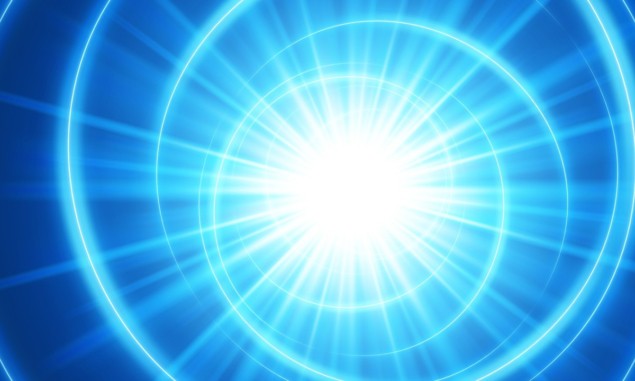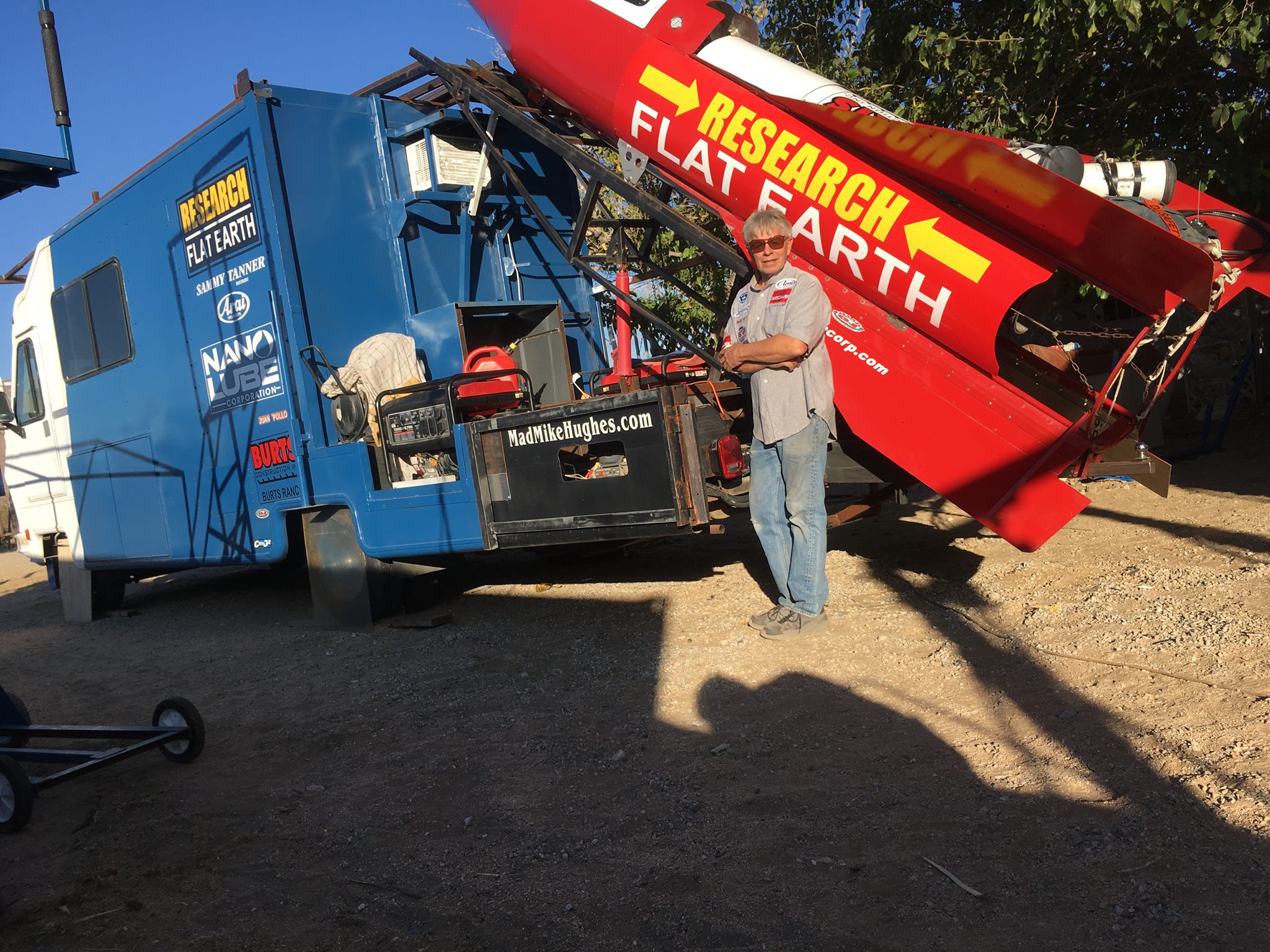Spacecraft in a ‘warp bubble’ could travel faster than light, claims physicist
19 Mar 2021

Warp drive: could positive-energy solitons move a spacecraft faster than the speed of light? (Courtesy: iStock/VikaSuh)
Albert Einstein’s special theory of relativity famously dictates that no known object can travel faster than the speed of light in vacuum, which is 299,792 km/s. This speed limit makes it unlikely that humans will ever be able to send spacecraft to explore beyond our local area of the Milky Way.
However, new research by Erik Lentz at the University of Göttingen suggests a way beyond this limit. The catch is that his scheme requires vast amounts of energy and it may not be able to propel a spacecraft.
Lentz proposes that conventional energy sources could be capable of arranging the structure of space–time in the form of a soliton – a robust singular wave. This soliton would act like a “warp bubble’”, contracting space in front of it and expanding space behind. Unlike objects within space–time, space–time itself can bend, expand or warp at any speed. Therefore, a spacecraft contained in a hyperfast bubble could arrive at its destination faster than light would in normal space without breaking any physical laws, even Einstein’s cosmic speed limit.
Negative energy
The idea of creating warp bubbles is not new, it was first proposed in 1994 by the Mexican physicist Miguel Alcubierre who dubbed them “warp drives” in homage to the sci-fi series Star Trek. However, until Lentz’s research it was thought that the only way to produce a warp drive was by generating vast amounts of negative energy – perhaps by using some sort of undiscovered exotic matter or by the manipulation of dark energy. To get around this problem, Lentz constructed an unexplored geometric structure of space–time to derive a new family of solutions to Einstein’s general relativity equations called positive-energy solitons.
Though Lentz’s solitons appear to conform to Einstein’s general theory of relativity and remove the need to create negative energy, space agencies will not be building warp drives any time soon, if ever. Part of the reason is that Lentz’s positive-energy warp drive requires a huge amount of energy. A 100 m radius spacecraft would require the energy equivalent to “hundreds of times of the mass of the planet Jupiter”, according to Lentz. He adds that to be practical, this requirement would have to be reduced by about 30 orders of magnitude to be on par with the output of a modern nuclear fission reactor. Lentz is currently exploring existing energy-saving schemes to see if the energy required can be reduced to a practical level.
Any warp drive would also need to overcome several other serious issues. Alcubierre, who regards Lentz’s work as a “significant development”, cites the “horizon problem” as one of the most pernicious. “A warp bubble travelling faster than light cannot be created from inside the bubble, as the leading edge of the bubble would be beyond the reach of a spaceship sitting at its centre,” he explains. “The problem is that you need energy to deform space all the way to the very edge of the bubble, and the ship simply can’t put it there.”
Spacecraft doubts
Lentz describes his calculations in Classical and Quantum Gravity, where other recent research on the topic is outlined in an accepted manuscript from Advanced Propulsion Laboratory researchers Alexey Bobrick and Gianni Martire. The duo describes a general model for a warp drive incorporating all existing positive-energy and negative-energy warp drive schemes, except Lentz’s which they say “likely forms a new class of warp drive space–times”.
However, they argue that a Lentz-type warp drive is like any other type of warp drive in the sense that, at its core, it is a shell of regular material and therefore subject to Einstein’s cosmic speed limit, concluding that “there is no known way of accelerating a warp drive beyond the speed of light”.
READ MORE

Ad astra! To the stars!
Though he recognizes these huge hurdles to building a warp drive, Lentz feels they are not insurmountable. “This work has moved the problem of faster-than-light travel one step away from theoretical research in fundamental physics and closer to engineering,” he says.
After addressing energy requirements, Lentz plans to “devise a means of creating and accelerating (and dissipating and decelerating) the positive-energy solitons from their constituent matter sources”, then confirm the existence of small and slow solitons in a laboratory, and finally address the horizon problem. “This will be important to passing the speed of light with a fully autonomous soliton,” he says.
Spacecraft in a ‘warp bubble’ could travel faster than light, claims physicist – Physics World
19 Mar 2021

Warp drive: could positive-energy solitons move a spacecraft faster than the speed of light? (Courtesy: iStock/VikaSuh)
Albert Einstein’s special theory of relativity famously dictates that no known object can travel faster than the speed of light in vacuum, which is 299,792 km/s. This speed limit makes it unlikely that humans will ever be able to send spacecraft to explore beyond our local area of the Milky Way.
However, new research by Erik Lentz at the University of Göttingen suggests a way beyond this limit. The catch is that his scheme requires vast amounts of energy and it may not be able to propel a spacecraft.
Lentz proposes that conventional energy sources could be capable of arranging the structure of space–time in the form of a soliton – a robust singular wave. This soliton would act like a “warp bubble’”, contracting space in front of it and expanding space behind. Unlike objects within space–time, space–time itself can bend, expand or warp at any speed. Therefore, a spacecraft contained in a hyperfast bubble could arrive at its destination faster than light would in normal space without breaking any physical laws, even Einstein’s cosmic speed limit.
Negative energy
The idea of creating warp bubbles is not new, it was first proposed in 1994 by the Mexican physicist Miguel Alcubierre who dubbed them “warp drives” in homage to the sci-fi series Star Trek. However, until Lentz’s research it was thought that the only way to produce a warp drive was by generating vast amounts of negative energy – perhaps by using some sort of undiscovered exotic matter or by the manipulation of dark energy. To get around this problem, Lentz constructed an unexplored geometric structure of space–time to derive a new family of solutions to Einstein’s general relativity equations called positive-energy solitons.
Though Lentz’s solitons appear to conform to Einstein’s general theory of relativity and remove the need to create negative energy, space agencies will not be building warp drives any time soon, if ever. Part of the reason is that Lentz’s positive-energy warp drive requires a huge amount of energy. A 100 m radius spacecraft would require the energy equivalent to “hundreds of times of the mass of the planet Jupiter”, according to Lentz. He adds that to be practical, this requirement would have to be reduced by about 30 orders of magnitude to be on par with the output of a modern nuclear fission reactor. Lentz is currently exploring existing energy-saving schemes to see if the energy required can be reduced to a practical level.
Any warp drive would also need to overcome several other serious issues. Alcubierre, who regards Lentz’s work as a “significant development”, cites the “horizon problem” as one of the most pernicious. “A warp bubble travelling faster than light cannot be created from inside the bubble, as the leading edge of the bubble would be beyond the reach of a spaceship sitting at its centre,” he explains. “The problem is that you need energy to deform space all the way to the very edge of the bubble, and the ship simply can’t put it there.”
Spacecraft doubts
Lentz describes his calculations in Classical and Quantum Gravity, where other recent research on the topic is outlined in an accepted manuscript from Advanced Propulsion Laboratory researchers Alexey Bobrick and Gianni Martire. The duo describes a general model for a warp drive incorporating all existing positive-energy and negative-energy warp drive schemes, except Lentz’s which they say “likely forms a new class of warp drive space–times”.
However, they argue that a Lentz-type warp drive is like any other type of warp drive in the sense that, at its core, it is a shell of regular material and therefore subject to Einstein’s cosmic speed limit, concluding that “there is no known way of accelerating a warp drive beyond the speed of light”.
READ MORE

Ad astra! To the stars!
Though he recognizes these huge hurdles to building a warp drive, Lentz feels they are not insurmountable. “This work has moved the problem of faster-than-light travel one step away from theoretical research in fundamental physics and closer to engineering,” he says.
After addressing energy requirements, Lentz plans to “devise a means of creating and accelerating (and dissipating and decelerating) the positive-energy solitons from their constituent matter sources”, then confirm the existence of small and slow solitons in a laboratory, and finally address the horizon problem. “This will be important to passing the speed of light with a fully autonomous soliton,” he says.
Spacecraft in a ‘warp bubble’ could travel faster than light, claims physicist – Physics World
 science is trying to build on knowledge we already have to break new ground.
science is trying to build on knowledge we already have to break new ground.







 lmao that dog had that p*ssy trying to leap from the fence to the roof but it's fat ass couldn't make it
lmao that dog had that p*ssy trying to leap from the fence to the roof but it's fat ass couldn't make it